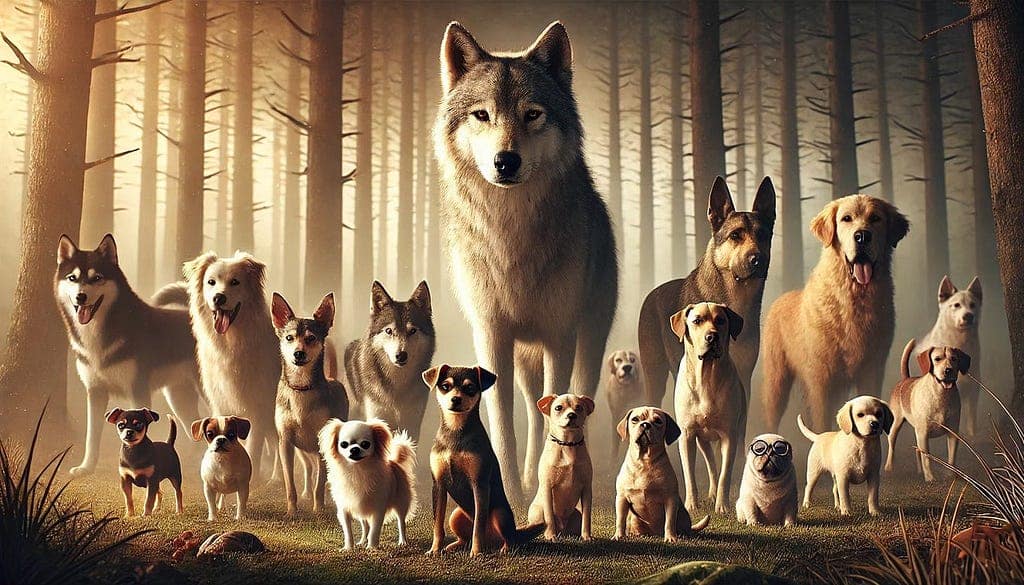“We are waves of the same sea, leaves of the same tree, flowers of the same garden.” — Seneca
“Why did you say ‘brother’ to people who aren’t your brother?” [Referring to how I addressed people at The Reinvention Summit].
My son’s breakfast-time question hung in the air, innocent yet profound. How could I explain this ingrained habit, perhaps an echo from a career in team sports? So I started by telling him a story that begins with wolves.
A Wolf in Sheepdog’s Clothing
All dogs, from poodle to pitbull, are descendants of wolves. Despite their differences in size, shape, and behaviour, when dogs encounter each other, they don’t see those differences as separating them. They recognise each other as dogs, part of the same pack. The connection is instinctive, ancestral, written into their genes. Beneath all the curated traits bred by humans, a Border Collie is still a wolf in sheepdog’s clothing.
And this isn’t just a dog story. It’s a human one too.
In the Company of Wolves (and Each Other)
“We are more alike, my friends, than we are unalike.” — Maya Angelou
Genetically, all humans are far more alike than different. 99.9% of the DNA of every human being is identical. The remaining 0.1% accounts for variations like eye colour, skin tone, height, or the ability to digest milk. It’s a spray of difference in an ocean of similarity.
This makes sense when you consider that every single person alive today shares a common origin in Africa. Roughly 200,000 years ago, Homo sapiens evolved on that continent. Then, between 60,000 and 70,000 years ago, a small group of our ancestors left Africa and began to spread across the globe. These travellers became the ancestors of all non-African people.
We’re all in different costumes, yes. But our genes remember, even when we forget.
Toba: A Volcanic Near-Miss
“A human being is part of a whole, called by us ‘universe,’ a part limited in time and space. He experiences himself, his thoughts, and feelings as something separate from the rest — a kind of optical delusion of his consciousness.” — Albert Einstein
The story of Pingelap, a tiny Pacific island nearly decimated by a typhoon in the 18th century, highlights what is known as a genetic bottleneck. With only about 20 survivors, including one man carrying a rare gene for complete colour blindness, the island’s isolation led to the rapid spread of this trait. Today, roughly 10% of Pingelap’s population still lives with colour blindness, a reminder of how profoundly shared ancestry can shape a community.
Now, imagine that bottleneck on a global scale. Around 75,000 years ago, the supervolcano Toba erupted in present-day Indonesia. The ensuing volcanic winter may have reduced the global human population to as few as 1,000 to 10,000 breeding pairs.
It’s entirely possible that every single person alive today descends from that tiny gene pool. So, when we speak of being related, it’s not a poetic sentiment; it’s a scientific reality.
All Life as One
‘The three-letter words of the genetic code are the same in every creature. CGA means arginine and GCG means alanine — in bats, in beetles, in beech trees, in bacteria. They even mean the same in the misleadingly named archaebacteria living at boiling temperatures in sulphurous springs thousands of feet beneath the surface of the Atlantic ocean or in those microscopic capsules of deviousness called viruses. Wherever you go in the world, whatever animal, plant, bug or blob you look at, if it is alive, it will use the same dictionary and know the same code. All life is one. The genetic code, bar a few tiny local aberrations, mostly for unexplained reasons in the ciliate protozoa, is the same in every creature. We all use exactly the same language. This means that all life is one; seaweed is your distant cousin and anthrax one of your advanced relatives. The unity of life is an empirical fact.’ Matt Ridley, Genome, P.22
The same DNA that connects dogs to wolves and us to each other is a universal language that all life speaks. All life shares a universal language: DNA. Every living thing on Earth — humans, dogs, trees, jellyfish, and even bananas — uses the same molecular alphabet to write its biological story. The genetic code that builds a banana is written in the same script that builds you. In fact, we share around 60% of our genes with a banana. And about 99% with a chimpanzee.
This concept of shared ancestry is echoed in the words of Martin Luther King Jr., who said, “We may have all come on different ships, but we’re in the same boat now.”
We all descend from a single origin point: the Last Universal Common Ancestor (LUCA) — a single-celled organism that lived around 3.5–4 billion years ago. LUCA wasn’t the first life form, but it’s the one whose genes survived and proliferated. Every living organism today, from the smallest bacterium to the most complex mammal, can trace a direct lineage back to this one ancestor.
So, when we say “brother” to someone who isn’t our biological brother, there is a deeper reason. Understanding this might just help us treat others with the respect, compassion, and equality that our shared humanity would suggest.
Bored to Death
My son’s reply (although he had long stopped listening after the wolf story): “I am sorry I asked”.
The latest in our series with Gary Hamel is now live: The Future of Management Part 2.
https://medium.com/media/b855766dc819adccc7e766047d6e951c/href
The Genetic Bond: A Wolf in Sheepdog’s Clothing was originally published in The Thursday Thought on Medium, where people are continuing the conversation by highlighting and responding to this story.
The post The Genetic Bond: A Wolf in Sheepdog’s Clothing appeared first on The Innovation Show.

